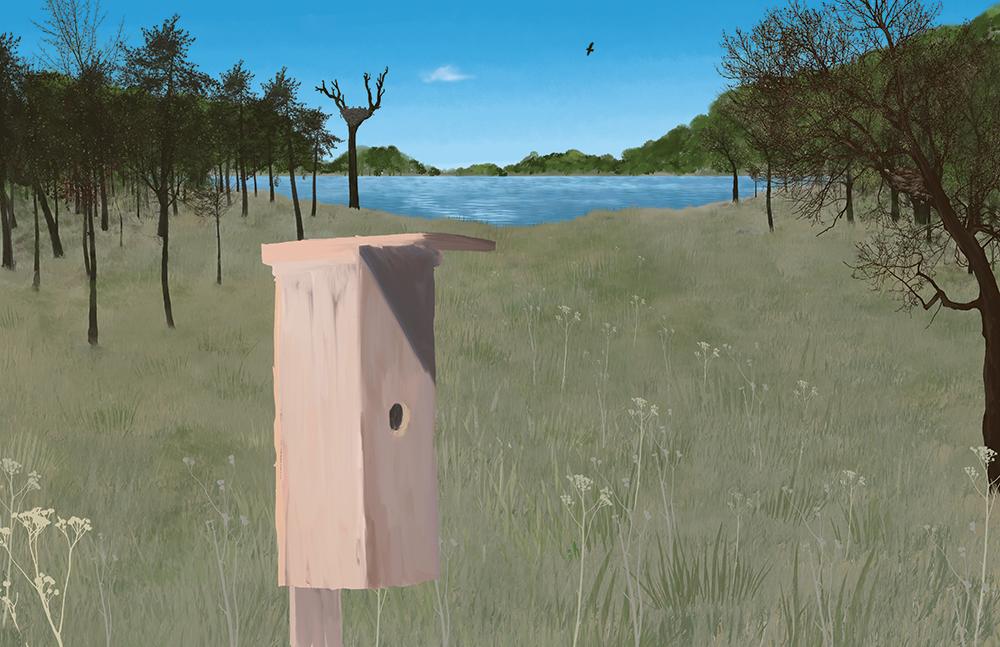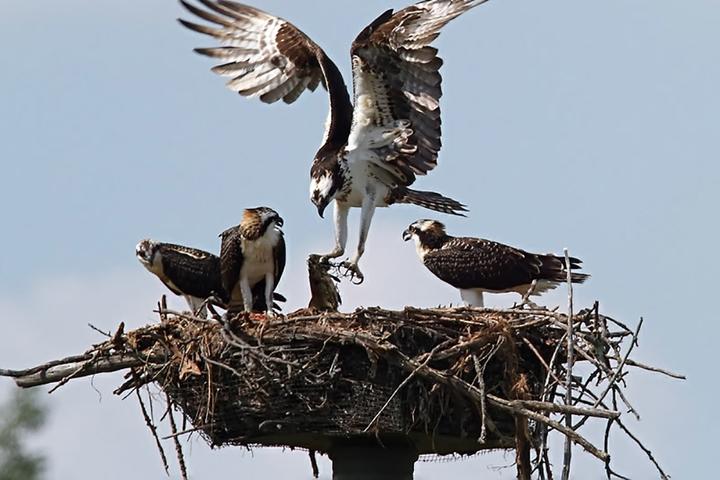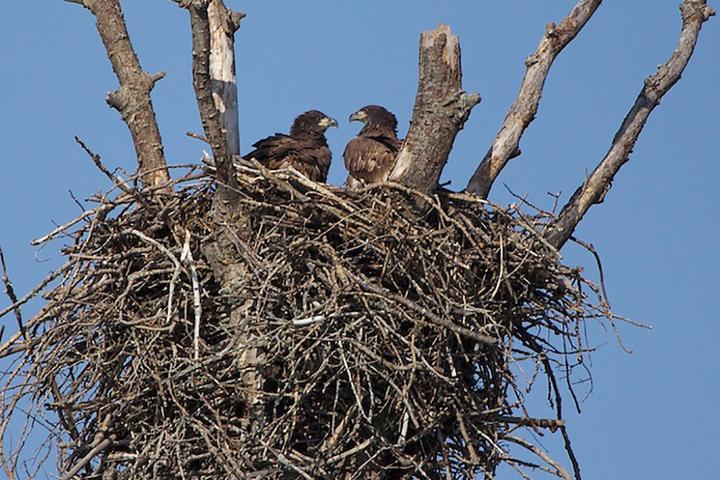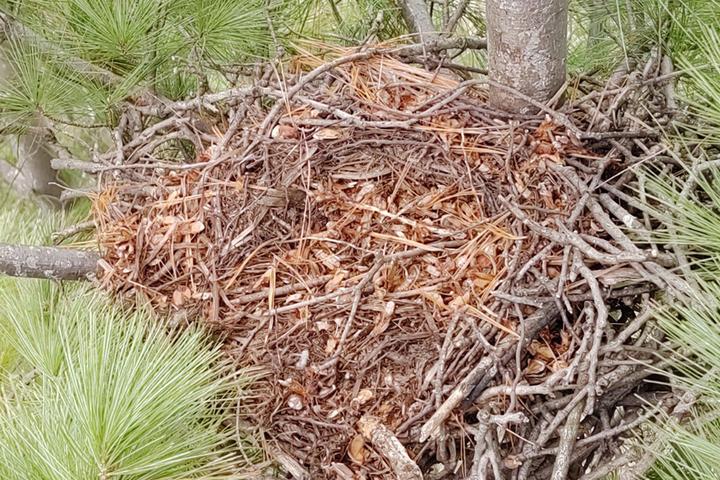
“At The Raptor Center (TRC), we look at how well a nest is doing to learn about the health of the raptors within,” says Lori Arent, MS, assistant director at TRC. “However, they also tell us about the health of the environment in which the birds live.” For this reason, Arent says that people who find a raptor nest should leave it alone. “They can, of course, always call us if they sense a problem.”
A nest’s contents reveal a lot of valuable information. “For example, if the female is healthy, she may be more likely to lay the maximum clutch size for her species,” says Arent, “but if she is more nutritionally stressed, she may not lay eggs.”
Additionally, the things raptors use to line their nests can indicate what is readily available in their environment. “Raptors have certain things they prefer to line their nests with, and if unusual things are used—sometimes these can pose hazards to the young—it could reflect habitat loss or that they have easy access to things humans leave behind in the environment,” Arent says.
TRC has long taught its volunteers to identify nests and to bolster them. A few times a year, the rehabilitation coordinator at TRC leads a group of volunteers through the process of building and reinforcing original nests in order to help raptors in the wild be more successful. Plus, this effort helps TRC anticipate which nests will be successful for fostering the nestlings that come into the clinic, upon their release.
“At TRC, we focus our energy on either returning youngsters to their original nests or fostering them into different nests of the same species, rather than raising them ourselves. No matter how hard we try, we cannot do so nearly as well as parents can,” says Arent. “And we are always looking for additional volunteer climbers to help us place nests we have constructed. Training would of course be provided.”
TRC’s investment in nests, as well as in planting the trees for future nesting habitats, is all in an effort to create a sustainable future for raptors near and far.


